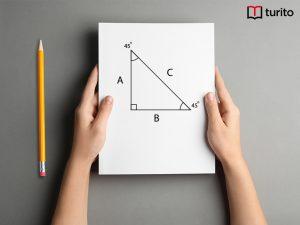Key Concepts
Compare fractions: Use Benchmarks
Compare fractions: Use the Number Lines
Whole Numbers and Fractions
Prior Knowledge:
Answer the following questions
- How can we compare different fractions?
- How many thirds are there in 2 wholes?
- Use the number line to help order the fractions from least to greatest.

Answers:
- If the denominators are different and the numerators are the same, then we can easily compare fractions by looking at their denominators.
- We can use a number line or fraction strips to find a fraction name for two using thirds.


Here, from the figure we get, 2 = 6/3
∴ The whole number 2 can also be written as the fraction 6/3
- Given number line would be

Fractions from least to greatest are shown as below:

The fractions from least to greatest are 0/4, 6/8, 1/4, 1/2 and 1.
Definition:
Benchmark fractions are common fractions that we compare with other fractions.
What benchmark fractions look like:
- Benchmark fractions are especially helpful on number lines
- The most famous number line used is a ruler
- Rulers use halves, fourths and eighths as benchmarks

Benchmark Fractions Chart:
Use the following benchmark chart for reference to compare fractions.

Example:
Keri wants to buy 2/6 of a container of roasted nuts. Alan wants to buy 2/3 of a container of roasted nuts. The containers are of the same size. Who will buy more nuts?

Comparing each fraction to the benchmark number 1/2

From the above figure, 2/6 is less than 2/3
Therefore,
2/3 is greater than 1/2.
Using symbols:
2/6 < 2/3.
13.6 Compare Fractions: Use the Number Line
Fractions on a Number Line
Consider the whole shape, split the whole into 5 equal parts.

Select 1/5 part of the whole and represent on a number line.
Look at this number line. It starts at 0 and ends at 1, which represents the whole.

Do you notice how it is split into 5 parts?
That means our denominator must be 5. The numerators should go up in consecutive order.
What the fractions would look like when marked on the number line is:

Now we can easily compare the fractions.
Note:
A fraction is larger if it is farther from 0 on the number line
A fraction is smaller if it is closer to 0 on the number line
Example:
Compare the fractions 2/3 and 2/3 and 3/4 using <, >, or = with the help of number lines
First, draw a number line model for
2/3
Next, draw the number line model for
3/4. Place it under the number line model for 2/3.

Which fraction is farther from 0?
Here, 3/4 is farther from 0 than 2/3.
This means that 3/4 is greater than 2/3
∴ 3/ 4 > 2/3
13.7 Whole Numbers and Fractions
- Whole numbers are numbers that do not have fractions. Examples as 1, 2, and 10
- Every whole number can be written as a fraction too
Writing Whole Numbers as Fractions:
You can write any whole number into an equivalent fraction. Just divide it by 1.
Can we write the whole number 1 into a fraction?
Yes, we can write 1 into a fraction just by dividing 1 by 1, i.e., 1/1.
Fractions Equivalent to Whole Numbers:
If the numerator is divisible by the denominator, the fraction is equivalent to a whole number.
In other words, if you can divide the numerator by the denominator without any remainder, the fraction is equivalent to a whole number.
Consider the improper fraction 2/2
Is it equivalent to a whole number?

Yes, we can divide the numerator (2) by the denominator (2) without any remainder.
So 2/2 is equivalent to a whole number.
∴2/2 is equal to the whole number 1.
Example:
Write the equivalent fractions for the whole number 4. Use fraction strips to name whole numbers.
Here, we use fractions strips to name whole numbers.

Twelve 1/3 fraction strips are equal to 4 whole fraction strips.
All whole numbers have fraction names.
We can write 4 = 12/3
We also know 4 = 4/1
So, we write 4 = 4/1 = 12/3.
Exercise:
- A mural is divided into 3 equal parts. What fraction represents the entire mural?
- A small cake is cut into 4 equal pieces. What fraction represents the entire cake?
- Write the equivalent fraction to the whole number 3.
- Compare with the help of a number line, which is greater
- Use fraction strips to compare
- Riley says the library is of a mile from their house. Sydney says it is of a mile. Use the number lines to find who is correct.
- Compare to the benchmark
- What fraction is equal to 65?
- What fraction is equal to 7?
- Mike had of a candy bar. Sally had of a candy bar. Whose fraction of a candy bar was closer to 1? Whose fraction of a candy bar was closer to 0?
What we have learnt:
- Compare fractions by using concrete models
- Compare fractions by using benchmarks
- Order fractions by using concrete models, benchmarks and number lines
- Use symbols (>, <, =) to compare fractions with benchmarks and number lines
- Use representations to find fraction names for whole numbers
Concept Map :



Related topics
Addition and Multiplication Using Counters & Bar-Diagrams
Introduction: We can find the solution to the word problem by solving it. Here, in this topic, we can use 3 methods to find the solution. 1. Add using counters 2. Use factors to get the product 3. Write equations to find the unknown. Addition Equation: 8+8+8 =? Multiplication equation: 3×8=? Example 1: Andrew has […]
Read More >>Dilation: Definitions, Characteristics, and Similarities
Understanding Dilation A dilation is a transformation that produces an image that is of the same shape and different sizes. Dilation that creates a larger image is called enlargement. Describing Dilation Dilation of Scale Factor 2 The following figure undergoes a dilation with a scale factor of 2 giving an image A’ (2, 4), B’ […]
Read More >>How to Write and Interpret Numerical Expressions?
Write numerical expressions What is the Meaning of Numerical Expression? A numerical expression is a combination of numbers and integers using basic operations such as addition, subtraction, multiplication, or division. The word PEMDAS stands for: P → Parentheses E → Exponents M → Multiplication D → Division A → Addition S → Subtraction Some examples […]
Read More >>System of Linear Inequalities and Equations
Introduction: Systems of Linear Inequalities: A system of linear inequalities is a set of two or more linear inequalities in the same variables. The following example illustrates this, y < x + 2…………..Inequality 1 y ≥ 2x − 1…………Inequality 2 Solution of a System of Linear Inequalities: A solution of a system of linear inequalities […]
Read More >>Other topics











Comments: